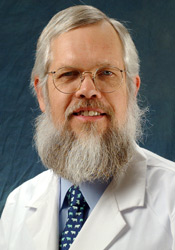"Type" is a difficult concept to define, but is an absolutely vital one when talking about breeds of livestock. One definition of type is the conformational peculiarities that separate one breed from another. It is safe to add that "type" almost represents the ideal mental picture of a breed. Type is therefore central to a breed's character and identity, and it is what sets the different breeds apart one from another. Quarter Horses have a "type"; Spanish Mustangs a different "type". Even closely related breeds, such as the Peruvian Paso and the Spanish Mustang, have subtle differences in type that help distinguish one from the other.
The Spanish Mustang comes to us today as an interesting amalgam of feral, rancher, Indian, Mission, and Mexican strains. One result of this broad base is that there are different types within the Spanish Mustang breed. These are described in breed literature as a heavy and a lighter type, with many intermediates. Within the extremes in the breed there are some consistent conformational traits that set Spanish Mustangs off from other horses and these conformational traits are essential to the typiness of the Spanish Mustang. Horses that exhibit all of the conformational peculiarities of the breed are said to be "typier" than those that have fewer.
Breeders of any breed need to be aware of type and what it is. Within every breed some individuals are going to be born that are "off type". The fate of these individuals has an important impact on the fate of the breed. If these animals are heralded and used widely as breeding stock, the breed's type will slowly erode until the original breed is unrecognizable. If, on the other hand, "off type" individuals are culled from breeding, then the original type can be preserved.
Modern horse breeds in America can give good lessons in the importance of type, and the ability of breeders to change type. One example is the Morgan horse. The original Morgan was a dual purpose farm chunk, valued for its durability and for its strength. Fashion has changed some strains of Morgan away from the original model into more of a refined show horse. Some of this was done by cross breeding, but much of it was done by selecting away from the original type. This has been done to the extent that the original type is now quite rare and its breeders, concerned about its extinction.
Draft breeds, such as the American Belgian and Clydesdale, are other good examples of the ability of type to change. Originally these were massive, stocky heavy horses with great bulk. They were used for agricultural work (when they were not being used to "breed up" Spanish Mustangs!). The modern use for these is usually for parade use and this has favored a much leggier, refined type. The original type is rare. So which one is the "real" breed - the modern type or the original? This is an important question in breed conservation and has no easy answer.
Dr. Sponenberg, is a professor at Virginia Tech University, is an influential expert in the genetics of domestic animals, known for his studies of the genetics of coat color. He has worked extensively on the identification and preservation of the Colonial Spanish Horse in the United States. The Colonial Spanish Horse is a horse descended from the Iberian horses brought to the New World by the Spanish and Portuguese. The Colonial Spanish Horses and several dozen sub-types or breeds, based in various regions of the USA where they survived, are visually identified by specific conformation and show distinctive DNA markers in common with Iberian horses, such as the Andalusian and Sorraia. Dr. Sponenberg is active in efforts to conserve rare breeds of livestock through the programs of the American Livestock Breeds Conservancy, as the Technical Programs Director.
Biomedical Sciences & Pathobiology / VA-MD Regional College of Veterinary Medicine
Virginia Tech, Duck Pond Drive (0442)
Blacksburg, Virginia 24061
copyright 2010


